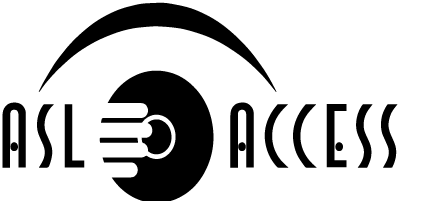Something Less? Something More!
by Chris Wixtrom, The Deaf Pride Advocate Vol.3 No 4 - Winter 1985
Meeting Deaf people awakened high respect for ASL and Deaf Culture!
Two Views of Deafness
by Chris Wixtrom, The Deaf American Vol. 38, No.1 - Winter 1988
Two perspectives on deafness
How to Communicate
Christine Wixtrom, The Deaf American Vol. 38 No. 4 – Fall 1988
Communication tips
Deaf Education Revisited
by Chris Wixtrom, (c) 2014
Thoughts on Improving Deaf Education
LET ME BE UNDERSTOOD
Chris Wixtrom, The Endeavor: American Society for Deaf Children, March/April 1986
Communication self-advocacy
Deaf People Can
Christine Wixtrom, Perspectives for Teachers of the Hearing Impaired, Vol. 5 No. 3 January/February 1987 (Artwork by Wixtrom’s students)
These young Deaf students who had never met a Deaf adult discovered that “Deaf People Can!”
Note: American Sign Language is a true language. Signing Exact English (SEE) is not a language. SEE is a manual code for English. Deaf students in this classroom had never met Deaf adults and they had never seen ASL. Their previous teachers had only used the manual code, SEE. The classroom poster calling ASL and SEE two “sign languages” helped the students begin to understand that ASL and English are two separate languages. Gallaudet University published this article in 1987, when the term “hearing impaired” was commonly used. This term is not appropriate today.
Reaching Out to Hispanic Families Through Special Activities
by Linda Twilling, Christine Wixtrom, and Jody Noble, Perspectives for Teachers of the Hearing Impaired, Vol. 6 No. 3 January/February 1988
Gallaudet University published this article in 1988, when the term, “hearing impaired” was commonly used. This term is not appropriate today.
Did You Know?
by Christine Wixtrom, published in The Deaf American, Vol. 38 No. 2 - Spring 1988
Are speech & language the same? Are language skills & intelligence the same? Are ASL & English the same?
Interview with Chris Wixtrom, Founder of ASL Access
Chris Wixtrom’s nonprofit organization ASL Access put 200+ ASL videos in each of 28 libraries across the U.S.
Two Views in Library Services
Excerpted from Deaf Studies: What's up? 1992 (pp. 21-29). Washington, DC: Gallaudet University, College for Continuing Education. Conference proceedings, October 24-25, 1991, p. 21 "How Pathological and Cultural Views of Deafness Affect Service-Delivery Programs" by Dr. Susan M. Mather, pp. 21-29, Gallaudet Research Institute (1992) Appendix p. 29: Two Views of Deafness Outline by Chris Wixtrom
What is Sign Language?
by Christine Wixtrom, published in The Deaf American Vol. 38 No. 3 - Summer 1988
Note: PSE is an outdated term. It represented a mix of ASL and English-influenced signing. A better term is contact sign.
Alone in the Crowd
by Christine Wixtrom, published in The Deaf American Vol. 38 No. 2 - Summer 1988
This article describes a Deaf student’s “mainstreaming” experiences
The article was published in 1988, when the term, “hearing impaired” was commonly used. This term is not appropriate today.
Moving Pictures of Deaf Identity
by Chris Wixtrom, published in DeafNation, February 1999
Deaf identity can be strongly developed with ASL videos.
